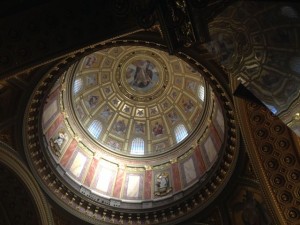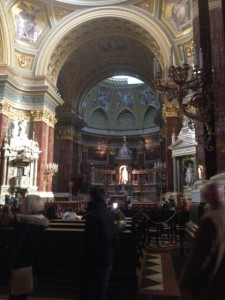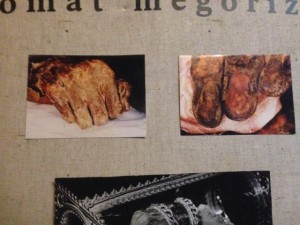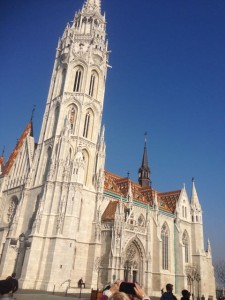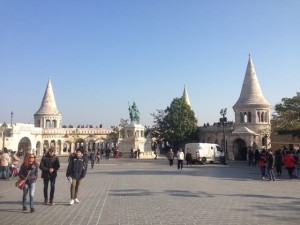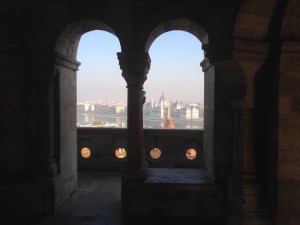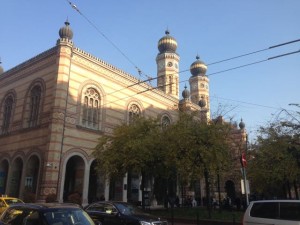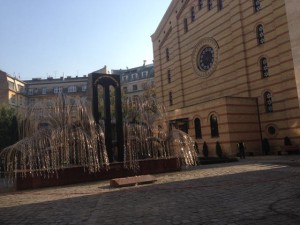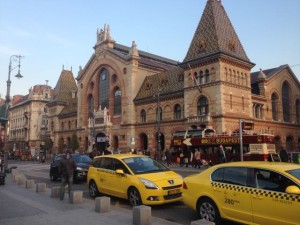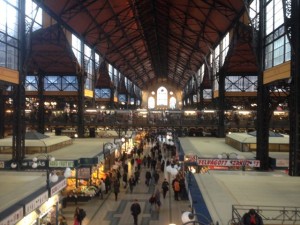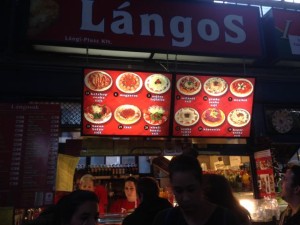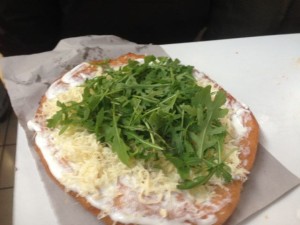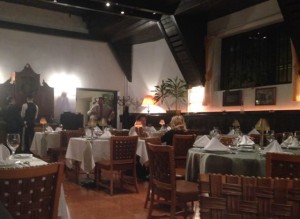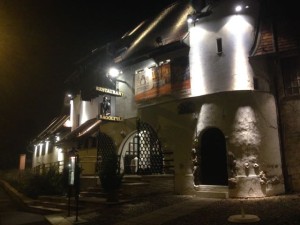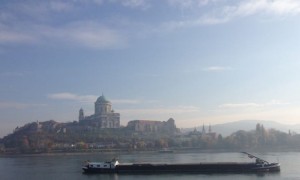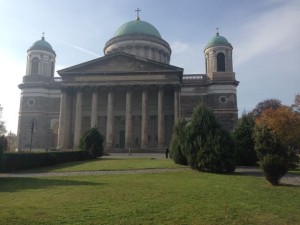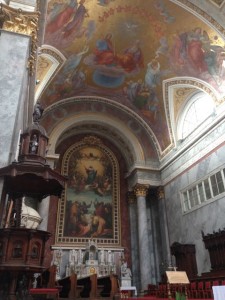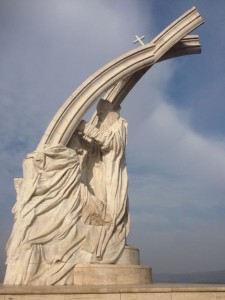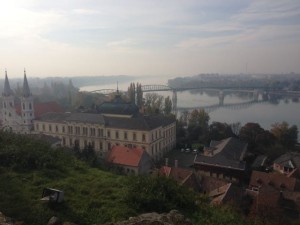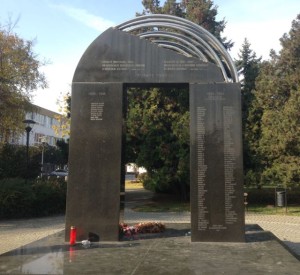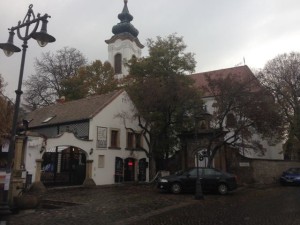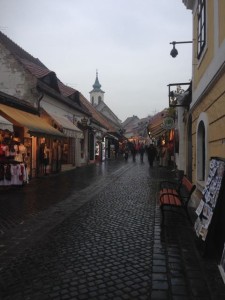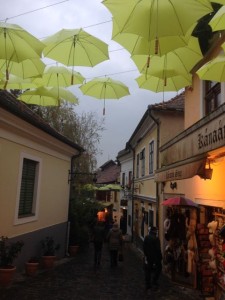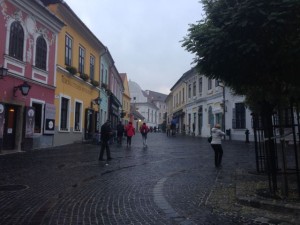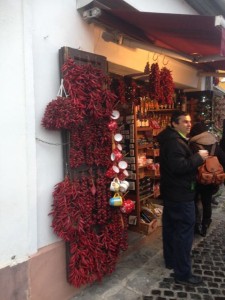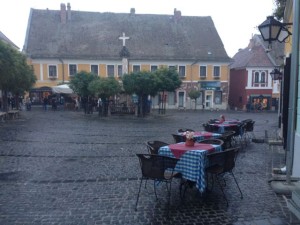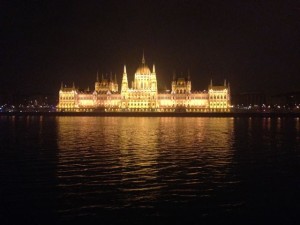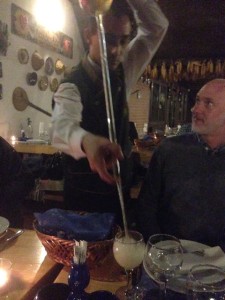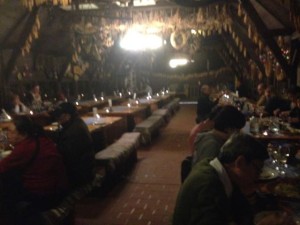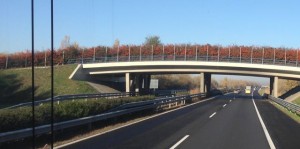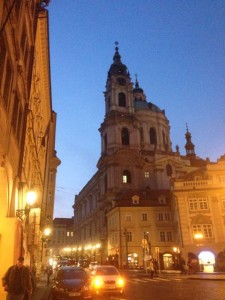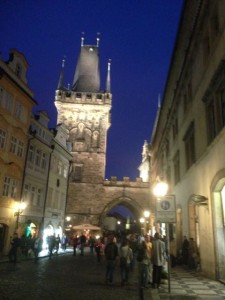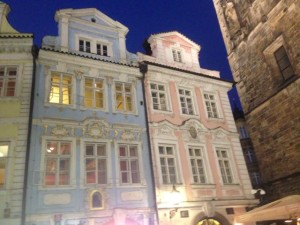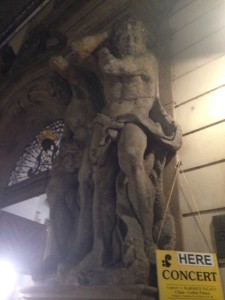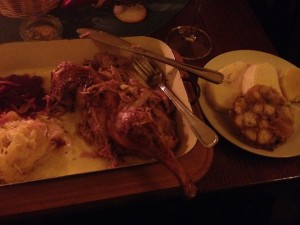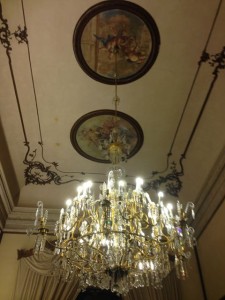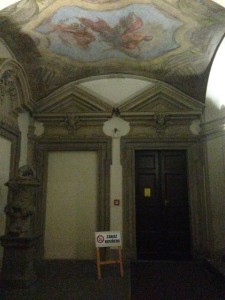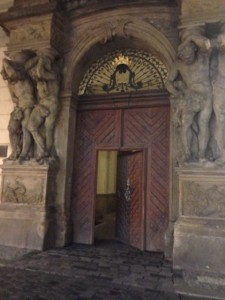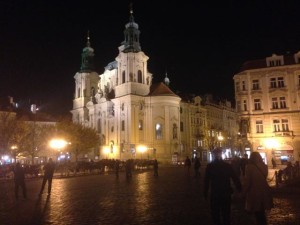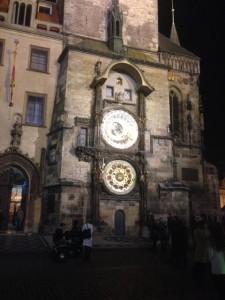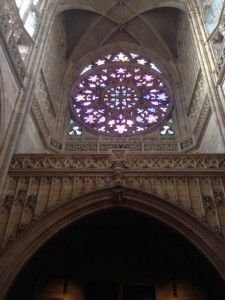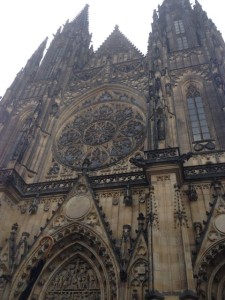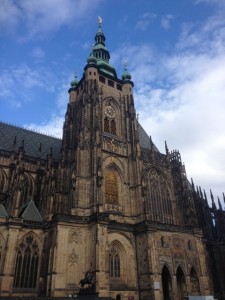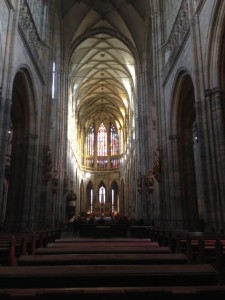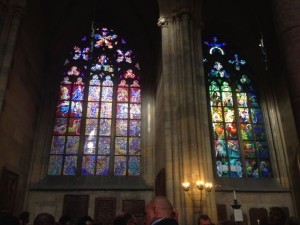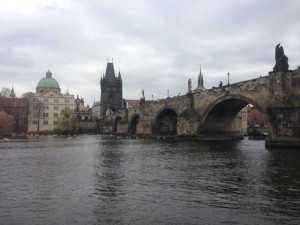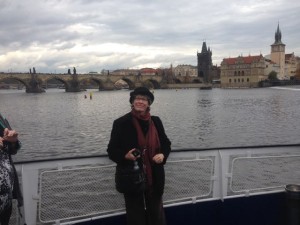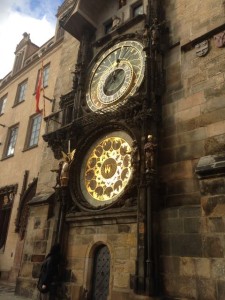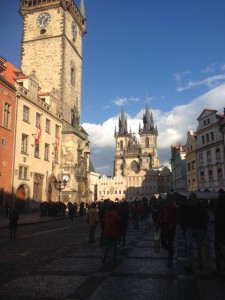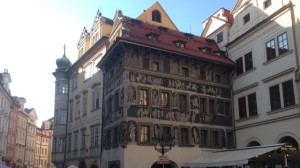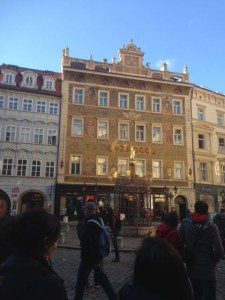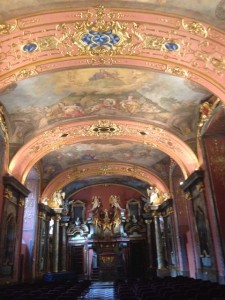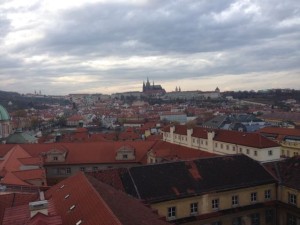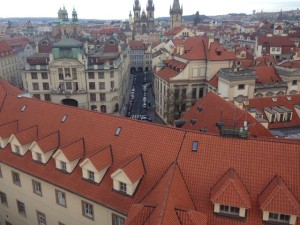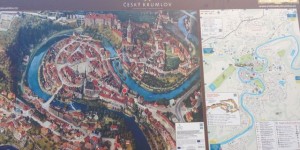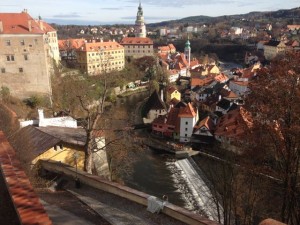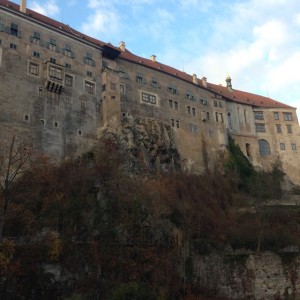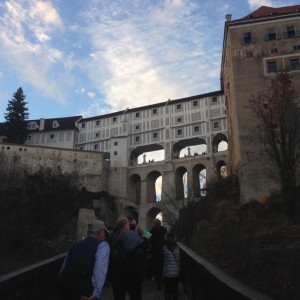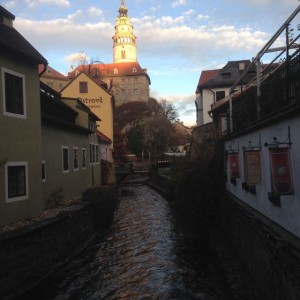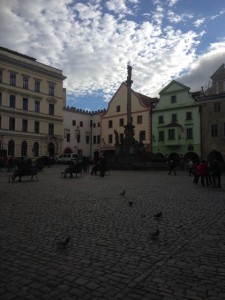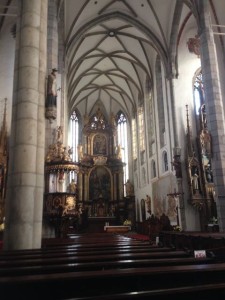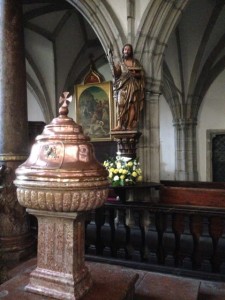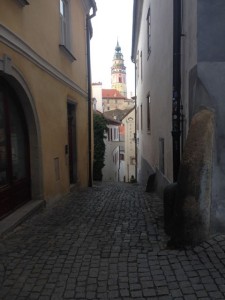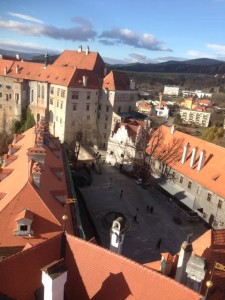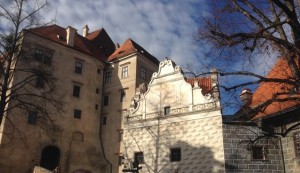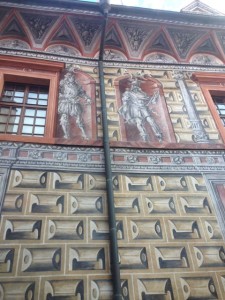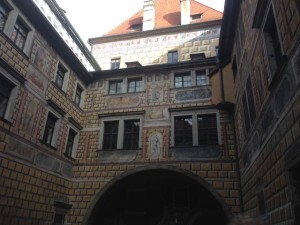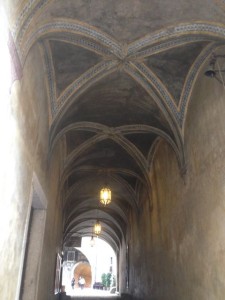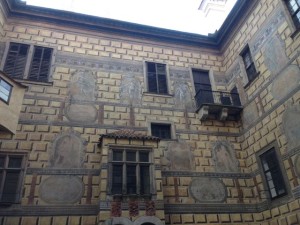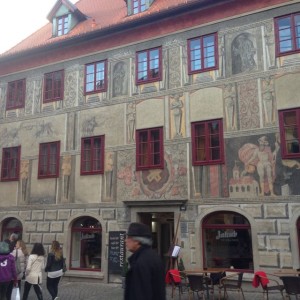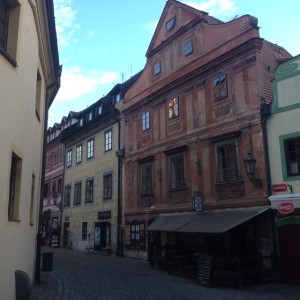Having found an amazing deal to go to Budapest and Prague that included our flight from New York, our hotels (3 nights in Budapest and 3 nights in Prague) and transportation from hotel to hotel for $800, my friend Ellie and I decided we couldn’t pass it up. The trip over was long (Jax to NY to Amsterdam to Budapest on Delta/KLM) close to 24 hrs, so we arrived a bit worse for wear (not having slept on the flight over), but luckily I had arranged to be met by a driver at the airport, Alajis Pulai who I found on a Tripadvisor post who met us at arrivals and delivered us to our hotel for 28 Euros (a pretty good deal since the airpot bus would have cost 10E each). We are staying at the Ibis Heroes’ Square, which is a fantastic location, a block from Heroes’ Square metro, walking distance to the Széchenyi Baths and half a block from a wonderful restaurant (Bagolyvar).
I decided to try to make the free walking tour that departs from Vörösmarty Square at 2:30 (also 10:30), but had only 20 min to make it. I took the Millennium Underground (M1) to Vörösmarty tér, which put me out exactly where the tour meets at the lion fountain at exactly the right time. The tour takes 2.5 hrs and is a wonderful introduction to Hungarian history and Budapest. The only disadvantage of the tour is that you can’t go into any of the churches, so you must go back on your own. It is a tip based tour, but w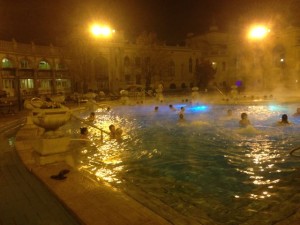 as far better than the 3hr bus tour I paid for the following day. From the end point of the tour, Fisherman’s Bastion, you take bus 16 (not 116 which I mistakenly jumped on), which delivers you back to Vorosmarty Square. We grabbed a quick bowl of goulash soup and headed off to the Szechenyi Baths.
as far better than the 3hr bus tour I paid for the following day. From the end point of the tour, Fisherman’s Bastion, you take bus 16 (not 116 which I mistakenly jumped on), which delivers you back to Vorosmarty Square. We grabbed a quick bowl of goulash soup and headed off to the Szechenyi Baths.
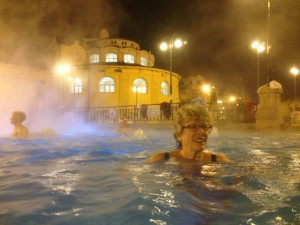
Although the indoor rooms close at 7 pm, the outdoor part of the baths stays open until 10pm. We payed 4200 forints (app $15) for admission and lockers. They rent towels and swimsuits if you didn’t pack one.
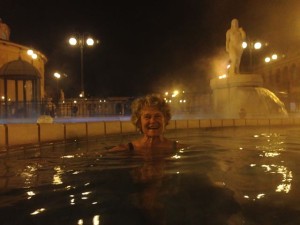
The baths were nothing short of magical. We were surrounded by gorgeous columned architecture and steam rising into the night, making us feel nothing short of imperial. The outdoor pools are not just hot mineral water, but feature lots of fun water features such as a central ring where water gushes out so fast that you are swept off your feet and around the circle (more fun than you can imagine) and geysers of water that massage your back.
Quite an amazing first 8 hrs in Budapest.
St. Stephen’s Basilica, begun in 1851 in a neo-classical style and completed in 1891 in a neo-renaissance style, is well worth the 200 forint donation. 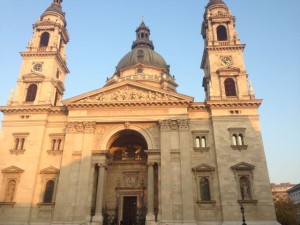
It also hold the mummified right hand of St. Stephen, known as the Holy Right.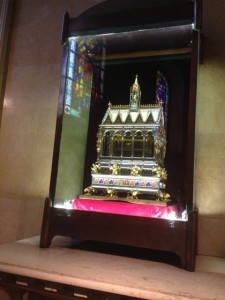
J.F. Penn’s One Day in Budapest does a fantastic job of weaving many of the main sights in Budapest into a tale of modern political intrigue in which a right wing political faction steals St. Stephen’s Right and blames it on the Jews in order to stir up anti-Jewish sentiment. It’s a great read before visiting Budapest.
The chain bridge is one of seven bridges in Budapest, all of which were destroyed along with close to 75% of the city during WWII. Adam Clark, a master builder from Scotland, completed the span in 1849. 
Matthias Church is a focal point Castle Hill. Built in 1245 but rebuilt in the Gothic style in 1896 is a focal point on the hill, along with Fisherman’s Bastion. 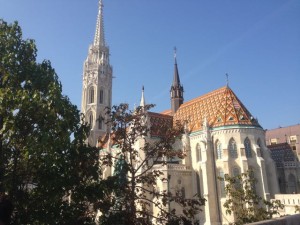
The seven towers of the Bastion represent the seven Mongols tribes that came to the Carpathian Basin from the Urals, the round towers representing their nomadic tents. Castle hill affords wonderful views of the Danube and Parliament building. We were lucky with weather, with clear, sunny days (lows in the 40’s and highs in the 60’s). November is a great time to visit because the summer and fall crowds have gone and the Christmas fair tourists have not arrived. Nothing is crowded and no reservations are necessary at restaurants.
Andrassy Avenue, one of many World Heritage Sights in Budapest connects the city center and City Park. It was begun in 1972 and completed in 1885, and was considered a masterpiece of city planning.The Millennium Underground Railway, which run beneath Andrassy Avenue, was the first subway line in continental Europe, opened in 1896. The line transported people from the city center to Városliget, the main venue of the Millennium celebrations in 1896, which celebrated 1000 years of Magyars.
Other sobering sights to visit are the House of Terror Museum, which describes the terror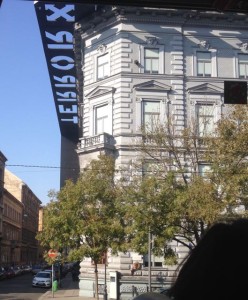 inflicted by both the Nazis and the Communists on the population, and the Shoes on the Danube Memorial, which commemorates the Jews who were shot at the end of the war by Arrow Cross militia on the banks of the Danube.
inflicted by both the Nazis and the Communists on the population, and the Shoes on the Danube Memorial, which commemorates the Jews who were shot at the end of the war by Arrow Cross militia on the banks of the Danube.
I also wandered the old Jewish Quarter and found the Great Synagogue, the largest in Europe and the second largest in the world. It was built between 1854 and 1859 in Moorish Revival style. The Holocaust Memorial is a weeping willow tree with the names of Hungarian Jews killed during the Holocaust inscribed on each leaf.
I also visited the Great Market Hall across from the Green Bridge.
In addition to finding goodies for Christmas presents, I sampled a langos with sour cream, cheese, and arugula (550 f or under $2).It was so filling that I could only eat half.
On the way back to the metro, I ducked into a Hungarian Orthodox church and saw this amazing altar piece.
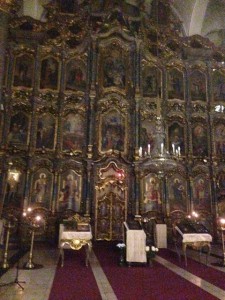 For dinner, we took ourselves out to Bagolyvar, a half block from our hotel.
For dinner, we took ourselves out to Bagolyvar, a half block from our hotel.
We dined in elegance, serenaded by an accordion player.




